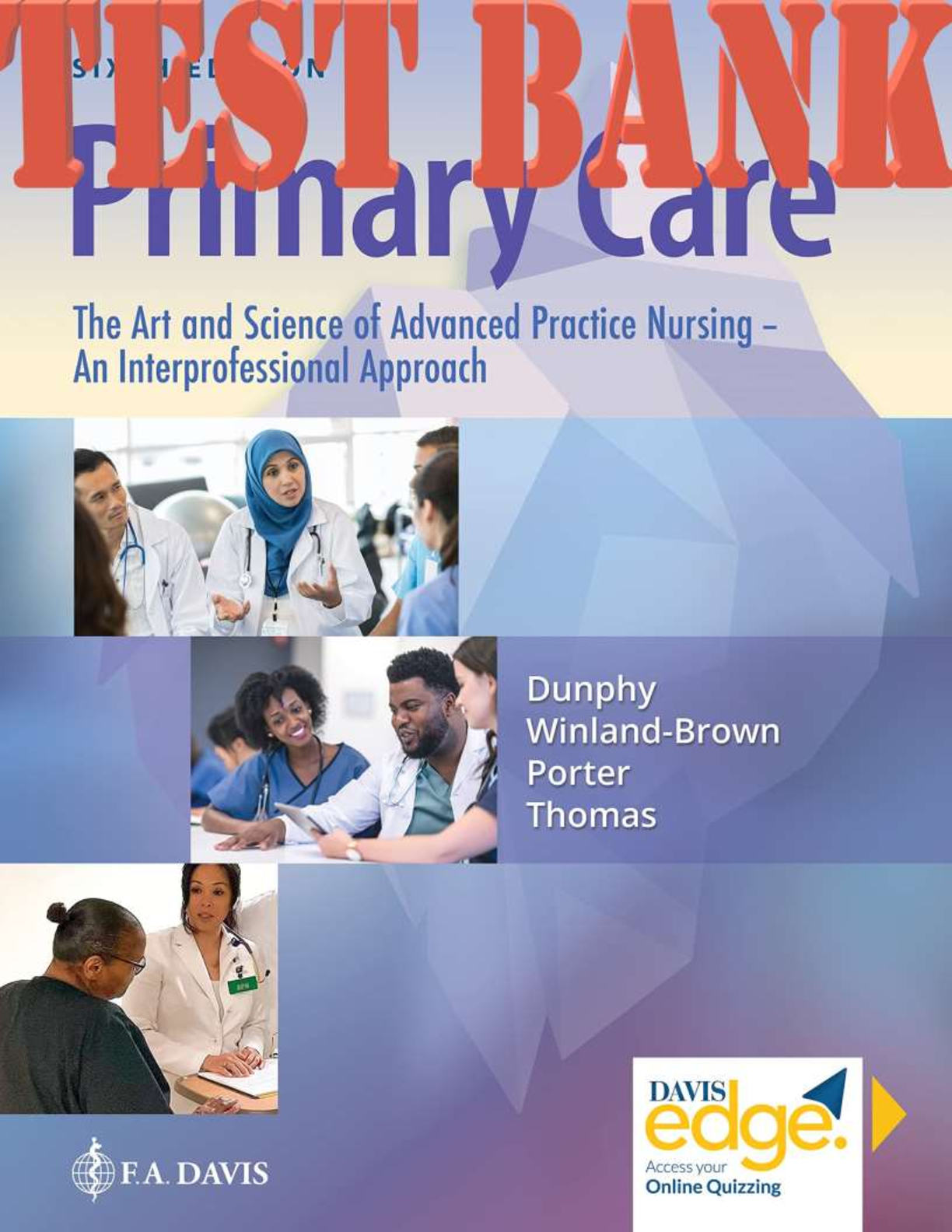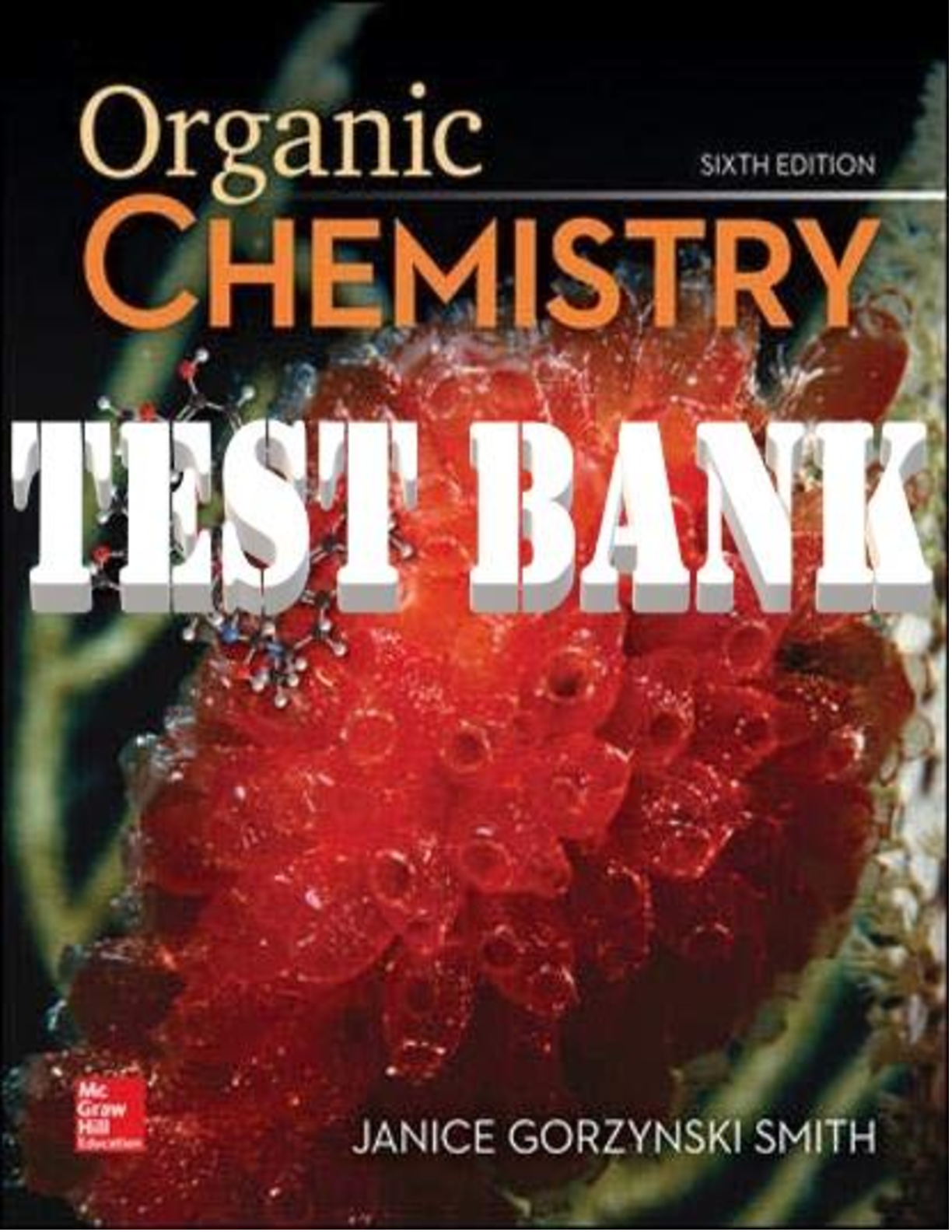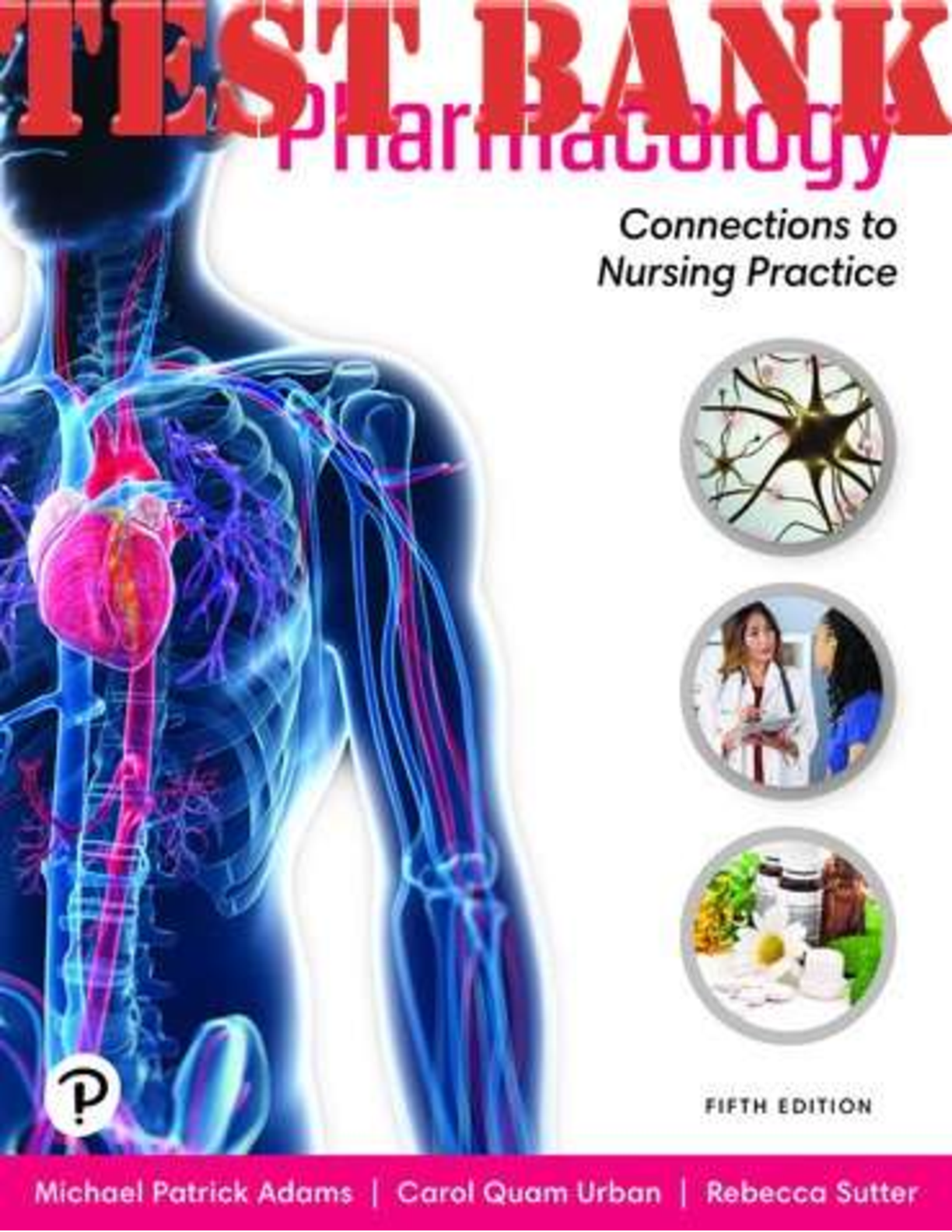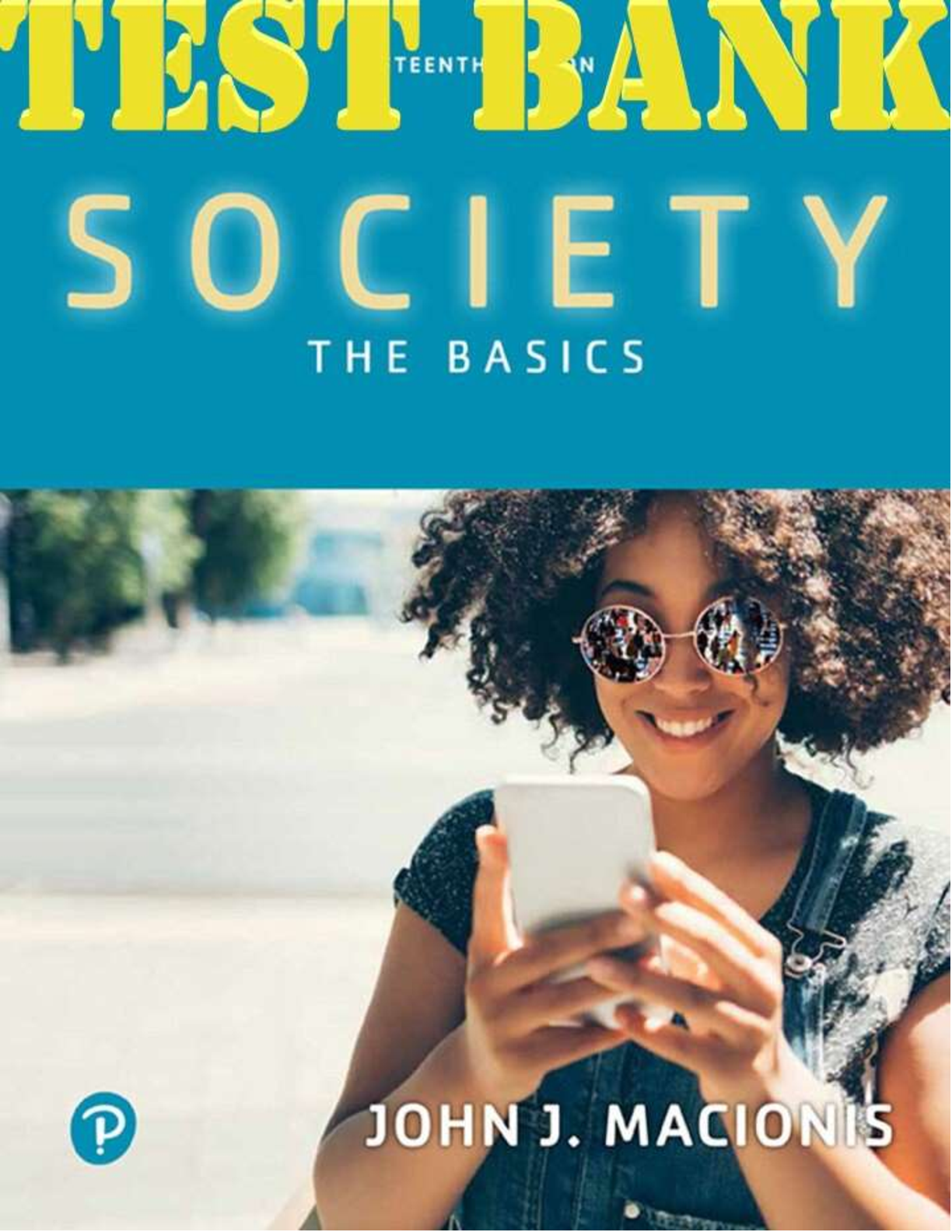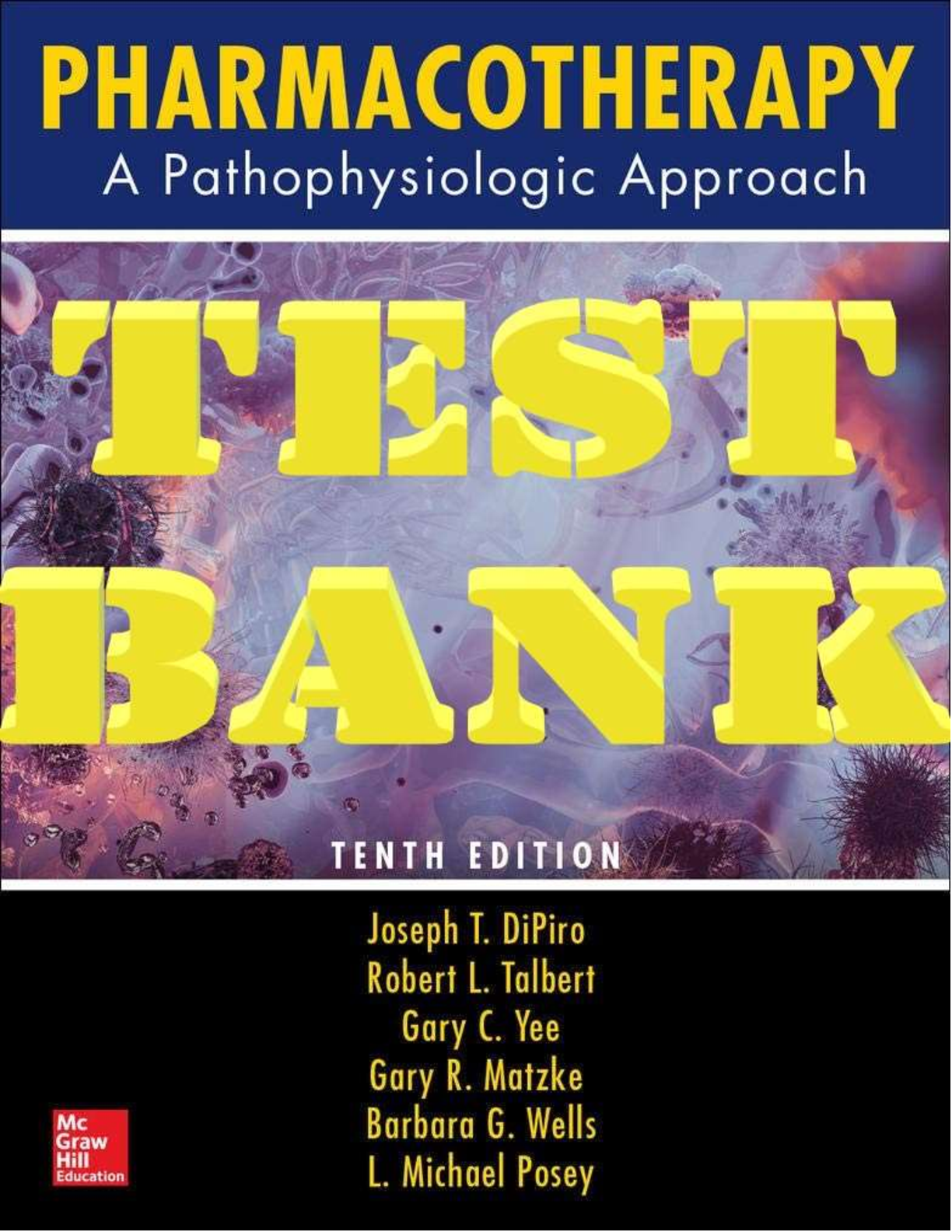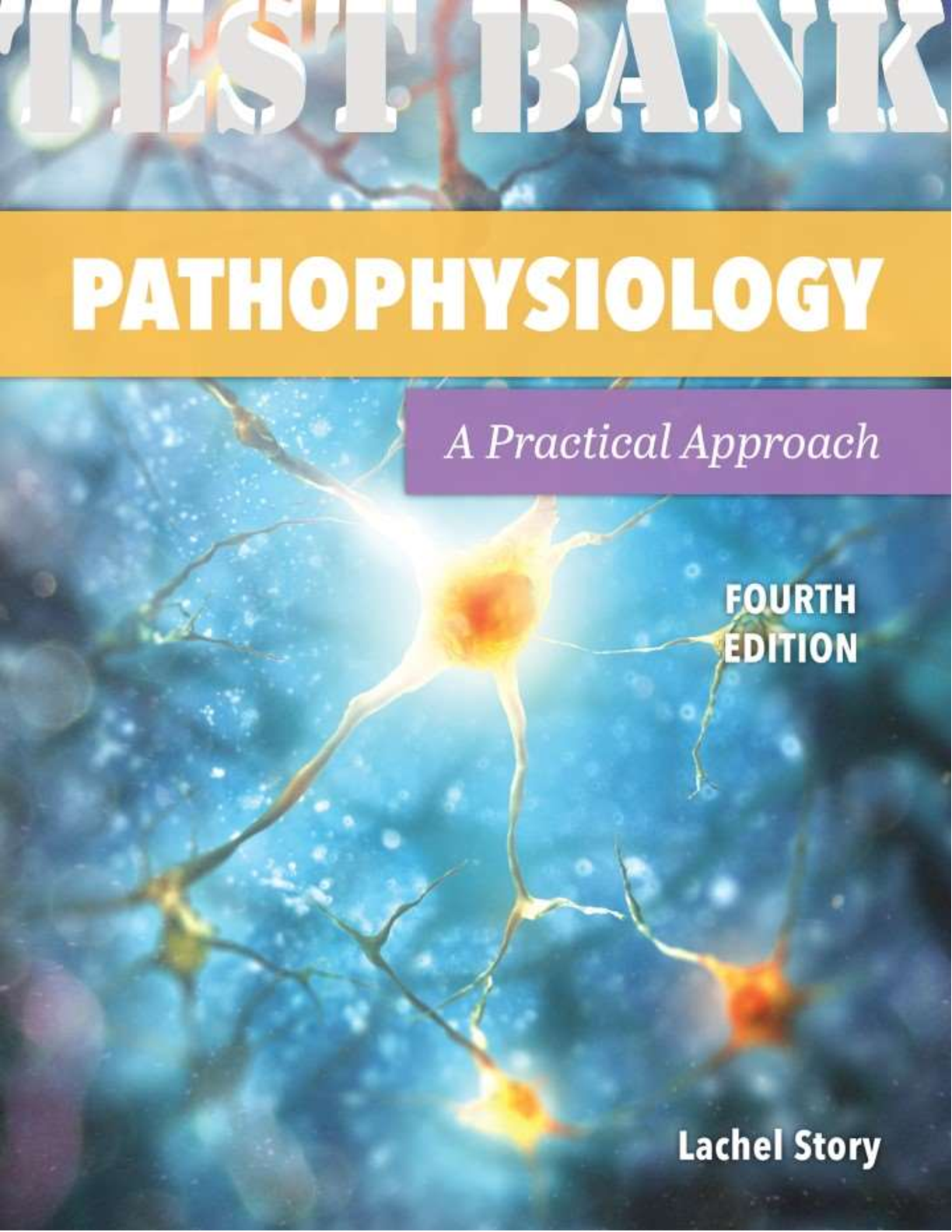Project Management > TEST BANK > BUSI 3309Chap002: Chapter 02 Organization Strategy and Project Selection Answer Key: TEST BANK. (All)
BUSI 3309Chap002: Chapter 02 Organization Strategy and Project Selection Answer Key: TEST BANK.
Document Content and Description Below
Chapter 02 Organization Strategy and Project Selection Answer Key Multiple Choice Questions 1. Which of the following is NOT about an organization’s strategy? A. Strategy determines how an... organization will compete B. Strategy is implemented through projects C. Only top management must understand strategy D. Project selection should be clearly aligned to strategy E. Project management plays a key role in supporting strategy Strategy was considered to be under the purview of senior management, but this is old school thinking. Projects and project management play a key role in supporting strategic goals. It is vital for project managers to think and act strategically. AACSB: Reflective Thinking Bloom's: Understand Learning Objective: The Strategic Management Process: An Overview Level: Medium 2. A project selection process that is strongly linked to strategy results in A. The most profit B. Better utilization of the organization’s resources C. More projects D. A larger and more diverse organization E. Stronger core competencies Without integration of projects with the strategic plan, resources are poorly utilized. Conversely, organizations that have a link of projects to strategy have more cooperation across the organization, perform better on projects and tend to have fewer projects. AACSB: Reflective Thinking Bloom's: Understand Learning Objective: The Strategic Management Process: An Overview Level: Medium 3. Which of the following is NOT about organizational politics? A. Project managers should not engage in organizational politics B. Politics can have a significant influence on which projects receive funding C. Politics exist in every organization D. Politics can influence project selection E. Politics can play a role in the aspirations behind projects Many would argue that project management and politics should not mix. A more proactive response would be that projects and politics invariably mix. Effective project managers recognize that any significant project has political ramifications. AACSB: Reflective Thinking Bloom's: Understand Learning Objective: The Need for a Project Management System Level: Difficult 4. Which of the following terms is often used to denote a project that a powerful, high-ranking official is advocating? A. Sacred cow B. Pet project C. Political necessity D. Special undertaking E. Strategic ploy The term “sacred cow” is often used to denote a project that a powerful, high-ranking official is advocating. AACSB: Reflective Thinking Bloom's: Remember Learning Objective: The Need for a Project Portfolio Management System Level: Easy 5. Why do project managers need to understand their organization's mission and strategy? A. To reduce project duration and increase the number of projects implemented B. So they can make appropriate decisions and adjustments and be effective project advocates C. It is only important for senior management to understand the organization’s mission and strategy D. To get their job done and increase opportunities for promotion E. So that they can make sure the customer is satisfied There are two main reasons why project managers need to understand their organization's mission and strategy. The first reason is so they can make appropriate decisions and adjustments. For example, how a project manager would respond to a suggestion to modify the design of a product to enhance performance will vary depending upon whether his company strives to be a product leader through innovation or to achieve operational excellence through low cost solutions. The second reason project managers need to understand their organization's strategy is so that they can be effective project advocates. Project managers have to be able to demonstrate to senior management how their project contributes to their firm's mission. AACSB: Reflective Thinking Bloom's: Understand Learning Objective: The Strategic Management Process: An Overview Level: Easy 6. Project managers who understand the role that their project plays in accomplishing the organization's strategy are able to do all of the following EXCEPT A. Demonstrate to senior management how their project contributes to the firm’s mission B. Explain to team members why certain project objectives and priorities are critical C. Explain to stakeholders why certain project objectives and priorities are critical D. Be able to respond appropriately to delays and/or questions about product design E. Be able to focus on problems or solutions, even if the project is a low priority strategically Project managers who understand the role that their project plays in accomplishing the organization's strategy will not be inclined to waste time focusing on problems that are a low priority in regard to achieving the organization’s strategy. AACSB: Reflective Thinking Bloom's: Understand Learning Objective: The Strategic Management Process: An Overview Level: Medium 7. All of the following are symptoms of organizations struggling with strategy disconnect and unclear priorities EXCEPT A. Frequent conflicts between managers B. Inadequate resources C. Employees confused about which projects are more important D. Not enough projects within the portfolio to make a profit E. People are working on multiple projects and feel inefficient Frequent conflicts between managers, inadequate resources, confused employees and multitasking are all symptoms of organizations struggling with strategy disconnect and unclear priorities. Typically these organizations are also completing projects with low priority which results in a portfolio that consists of too many projects that do not align with organizational strategy. AACSB: Reflective Thinking Bloom's: Understand Learning Objective: The Need for a Project Portfolio Management System Level: Easy 8. Which of the following problems refers to lack of understanding and consensus of organization strategy among top and middle-level managers? This also can result when top management formulates strategy and leaves implementation to functional managers. A. Multitasking B. Organization politics C. Implementation gap D. Resource conflicts E. Employee turnover The implementation gap refers to the lack of understanding and consensus of organization strategy among top and middle-level management. AACSB: Reflective Thinking Bloom's: Understand Learning Objective: The Need for a Project Portfolio Management System Level: Medium 9. Which of the following is NOT for strategic management? A. It should be done once every few years just before developing the operating plan B. It supports consistency of action at every level of the organization C. It develops an integrated and coordinated long-term plan of action D. It positions the firm to meet the needs of its customers E. It involves responding to changes in the external market and allocating scarce resources to improve a competitive position Two major dimensions of strategic management are responding to changes in the external environment and allocating scarce resources of the firm to improve its competitive position. Constant scanning of the external environment for changes is a major requirement for survival in a dynamic competitive environment. AACSB: Reflective Thinking Bloom's: Understand Learning Objective: The Strategic Management Process: An Overview Level: Difficult 10. Which of the following is the correct order for the strategic management process? A. Strategies, mission, objectives, projects B. Objectives, projects, mission, strategies C. Mission, strategies, objectives, projects D. Objectives, mission, strategies, projects E. Projects, mission, strategies, objectives Once the mission statement has been written, strategies are formulated. After this, objectives are developed to achieve the strategy and finally strategies are implemented through projects. AACSB: Reflective Thinking Bloom's: Remember Learning Objective: The Strategic Management Process: An Overview Level: Medium 11. Which of the following questions does the organization's mission statement answer? A. What are our long-term strategies? B. What are our long-term goals and objectives? C. How do we operate in the existing environment? D. What do we want to become? E. All of these are answered by the mission statement The mission identifies "what we want to become," or the raison d'être. Mission statements identify the scope of the organization in terms of its product or service. They communicate and identify the purpose of the organization to stakeholders. AACSB: Reflective Thinking Bloom's: Understand Learning Objective: The Strategic Management Process: An Overview Level: Medium 12. Which of the following is NOT one of the traditional components found in mission statements? A. Major products and services B. Profitability C. Target customers and markets D. Geographic domain E. Contribution to society Traditional components found in mission statements are major products and services, target customers and markets, and geographical domain. In addition, statements frequently include organizational philosophy, key technologies, public image, and contribution to society. AACSB: Reflective Thinking Bloom's: Understand Learning Objective: The Strategic Management Process: An Overview Level: Difficult 13. Which of the following is NOT one of the characteristics of effective objectives? A. Realistic B. Assignable C. Flexible D. Specific E. Measurable Characteristics of effective objectives are that they are specific, measurable, assignable, realistic and related to time. AACSB: Reflective Thinking Bloom's: Understand Learning Objective: The Strategic Management Process: An Overview Level: Easy 14. In order to formulate strategies that align with the mission the organization will need to A. Assess internal strengths and weaknesses B. Analyze competitors C. Examine the external environment D. Know their core competencies E. All of these should be considered when formulating strategies Strategy formulation includes assessment of the internal and external environments. AACSB: Reflective Thinking Bloom's: Understand Learning Objective: The Strategic Management Process: An Overview Level: Easy 15. The assessment of the external and internal environments is called _______ analysis. A. SWOT B. Competitive C. Industry D. Market E. Strategic The keys are to attempt to forecast fundamental industry changes and stay in a proactive mode rather than a reactive one. This assessment of the external and internal environments is known as the SWOT analysis (strengths, weaknesses, opportunities, and threats). AACSB: Reflective Thinking Bloom's: Remember Learning Objective: The Strategic Management Process: An Overview Level: Easy 16. Which of the following would be classified as an organizational threat? A. Slowing of the economy B. Excellent employees C. Poor product quality D. Declining facilities E. High labor costs Examples of perceived external threats could be a slowing of the economy, a maturing life cycle, exchange rates, or government regulation. AACSB: Reflective Thinking Bloom's: Understand Learning Objective: The Strategic Management Process: An Overview Level: Medium 17. Which of the following would be classified as an organizational opportunity? A. Low debt B. Excellent employees C. Increasing product demand D. Talented management E. Government regulation Typical opportunities are increasing demand, emerging markets, and demographics. Managers or individual firms have limited opportunities to influence such external environmental factors; however, in recent years notable exceptions have been new technologies such as Apple using the iPod to create a market to sell music. AACSB: Reflective Thinking Bloom's: Understand Learning Objective: The Strategic Management Process: An Overview Level: Medium 18. Which of the following is NOT one of the requirements for successful implementation of strategies through projects? A. Allocation of resources B. Prioritizing of projects C. Motivation of project contributors D. Adequate planning and control systems E. Quality management First, completing tasks requires allocation of resources. Resources typically represent funds, people, management talents, technological skills, and equipment. Frequently, implementation of projects is treated as an "addendum" rather than an integral part of the strategic management process. However, multiple objectives place conflicting demands on organizational resources. Second, implementation requires a formal and informal organization that complements and supports strategy and projects. Authority, responsibility, and performance all depend on organization structure and culture. Third, planning and control systems must be in place to be certain project activities necessary to ensure strategies are effectively performed. Fourth, motivating project contributors will be a major factor for achieving project success. Finally, areas receiving more attention in recent years are portfolio management and prioritizing projects. AACSB: Reflective Thinking Bloom's: Understand Learning Objective: The Strategic Management Process: An Overview Level: Difficult 19. Which of the following is NOT a problem associated with the absence of a project portfolio system? A. Organizational politics B. Lack of funding C. Resource conflicts D. Multitasking E. Implementation gap A project portfolio system can go a long way to reduce the impact the implementation gap, organization politics, resource conflicts and multitasking. AACSB: Reflective Thinking Bloom's: Remember Learning Objective: The Need for a Project Portfolio Management System Level: Medium 20. Susie's department is implementing many projects. She finds herself starting and stopping work on one task to go and work on another task, and then return to the work on the original task. Susie is experiencing A. Poor scheduling B. Excess work burden C. Flexible tasking D. Multitasking E. Burnout Resource sharing also leads to multitasking. Multitasking involves starting and stopping work on one task to go and work on another project, and then returning to the work on the original task. People working on several tasks concurrently are far less efficient, especially where conceptual or physical shutdown and startup are significant. AACSB: Reflective Thinking Bloom's: Apply Learning Objective: The Need for a Project Portfolio Management System Level: Medium 21. Project selection criteria are typically classified as A. Financial and nonfinancial B. Short-term and long-term C. Strategic and tactical D. Required and optional E. Cost and schedule Although there are many criteria for selecting projects, selection criteria are typically identified as financial and nonfinancial. AACSB: Reflective Thinking Bloom's: Understanding Learning Objective: A Portfolio Management System Level: Easy 22. The __________ financial model measures the current value of all cash inflows using management’s minimum desired rate of return. A. FUBAR B. ARR C. IRS D. IRB E. None of these The net present value (NPV) model uses management’s minimum desired rate of return to compute the present value of all net cash inflows. AACSB: Reflective Thinking Bloom's: Understand Learning Objective: A Portfolio Management System Level: Medium 23. Projects are usually classified into all but one of the following categories. Which one is NOT one of the typical classifications? A. Compliance and emergency B. Operational C. Strategic D. Political necessity E. All of these are typical classifications Many organizations find they have three different kinds of projects in their portfolio: compliance and emergency (must do), operational, and strategic projects. AACSB: Reflective Thinking Bloom's: Knowledge Learning Objective: A Portfolio Management System Level: Medium 24. One who endorses and lends political support for the completion of a specific project is known as the A. Project manager B. CEO C. Project sponsor D. Project lead E. Sacred cow Project sponsors play a significant role in the selection and successful implementation of product innovation projects. Project sponsors are typically high-ranking managers who endorse and lend political support for the completion of a project. AACSB: Reflective Thinking Bloom's: Remember Learning Objective: The Need for a Project Portfolio Management System Level: Easy 25. A project screening matrix typically contains all of the following EXCEPT A. The list of available projects B. Specific criteria C. Weights assigned to specific criteria D. Costs to complete each project E. All of these are typically contained Screening matrices should contain both financial and nonfinancial criteria that align with organization strategy. Weights are assigned to these criteria based on how well they align with strategy. Available projects are included in the matrix for comparison. AACSB: Reflective Thinking Bloom's: Understand Learning Objective: A Portfolio Management System Level: Difficult 26. Regardless of the criteria differences among different types of projects, the most important criterion for project selection is A. How the project will balance risk within the project portfolio B. The project’s fit to the organization strategy C. Compliance D. Nonfinancial E. Profit The project’s fit to the organization strategy is the most important criterion for project selection. This criterion should be consistent across all types of projects and carry a high priority relative to other criteria. AACSB: Reflective Thinking Bloom's: Understand Learning Objective: Applying a Selection Model Level: Medium 27. Examples of nonfinancial criteria include all of the following EXCEPT A. Capturing a larger market share B. Reducing dependency on unreliable suppliers C. Preventing government intervention and regulation D. Making it difficult for competitors to enter the market E. Calculating the time it will take to recover the project investment The payback model measures the time it will take to recover the project investment. It is considered a financial criterion. AACSB: Reflective Thinking Bloom's: Understanding Learning Objective: A Portfolio Management System Level: Easy 28. Which of the following is of multiweighted scoring models? A. Will include quantitative criteria B. Will include qualitative criteria C. Each criterion is assigned a weight D. Projects with higher scores are considered more desirable E. All of these are A weighted scoring model typically uses several weighted selection criteria to evaluate project proposals. Weighted scoring models will generally include qualitative and/or quantitative criteria. Each selection criterion is assigned a weight. Scores are assigned to each criterion for the project, based on its importance to the project being evaluated. The weights and scores are multiplied to get a total weighted score for the project. Using these multiple screening criteria, projects can then be compared using the weighted score. Projects with higher weighted scores are considered better. AACSB: Reflective Thinking Bloom's: Understand Learning Objective: A Portfolio Management System Level: Difficult 29. Which of the following is NOT when managing a portfolio system? A. The qualities of a particular project are assessed within the context of existing projects B. It does not require a constant effort C. Within a small organization it can be managed by a small group of key employees D. It requires input from senior management E. It involves monitoring and adjusting criteria to reflect the strategic focus of the organization Managing a project portfolio system requires a constant effort in order to make sure selection criteria reflect the strategic focus of the organization. AACSB: Reflective Thinking Bloom's: Understand Learning Objective: Managing the Portfolio System Level: Medium 30. The following are responsibilities of the governance team when managing a portfolio system EXCEPT A. Deciding how they wish to balance the available organizational resources among the different types of projects B. Publishing the priority of every project and ensuring the process is open and free of power politics C. Evaluating the progress of the projects in the portfolio D. Constant scanning of the external environment to determine if organizational selection criteria need to be changed E. Communicating which projects are approved Deciding how they wish to balance the available organizational resources among the different types of projects is the responsibility of senior management along with providing guidance in establishing selection criteria that strongly align with the current organization strategies. AACSB: Reflective Thinking Bloom's: Understand Learning Objective: Managing a Portfolio System Level: Difficult Fill in the Blank Questions 31. The process of assessing “what we are” and deciding and implementing “what we intend to be and how we are going to get there” is ______________. Strategic management is the process of assessing what we are, what we intend to be and how we are going to get there. It consists of constant scanning of the external environment and allocating resources of the firm to improve its competitive position. AACSB: Reflective Thinking Bloom's: Understand Learning Objective: A Portfolio Management System Level: Medium 32. ________ change infrequently and may require revision only when the nature of the business changes or shifts. Mission statements change infrequently; however, when the nature of the business changes or shifts, a revised mission statement may be required. AACSB: Reflective Thinking Bloom's: Understand Learning Objective: The Strategic Management Process: An Overview Level: Medium 33. ________ translate the organization's strategy into specific, concrete, and measurable terms. Objectives translate the organization strategy into specific, concrete, measurable terms. Organizational objectives set targets for all levels of the organization. AACSB: Reflective Thinking Bloom's: Understand Learning Objective: The Strategic Management Process: An Overview Level: Medium 34. How strategies will be realized, given available resources is answered through __________. Implementation answers the question of how strategies will be realized, given available resources. The conceptual framework for strategy implementation lacks the structure and discipline found in strategy formulation. AACSB: Reflective Thinking Bloom's: Understand Learning Objective: The Strategic Management Process: An Overview Level: Medium 35. High-ranking managers who endorse and lend political support for the completion of a specific project are known as project _________. Project sponsors are typically high-ranking managers who endorse and lend political support for the completion of a specific project. They are instrumental in winning approval of the project and in protecting the project during the critical development stage. AACSB: Reflective Thinking Bloom's: Knowledge Learning Objective: A Portfolio Management System Level: Medium 36. A weighted scoring model typically uses several weighted selection criteria to evaluate project proposals. An example of this would be a(n) ____________.. AACSB: Reflective Thinking Bloom's: Understand Learning Objective: A Portfolio Management System Level: Difficult 37. What the organization wants to become and the scope of the firm in terms of its product or service would be identified in the organization’s ____________. mission statement The mission statement identifies "what we want to become," or the raison d'être. Mission statements identify the scope of the organization in terms of its product or service. AACSB: Reflective Thinking Bloom's: Understand Learning Objective: The Strategic Management Process: An Overview Level: Medium 38. In a SWOT analysis, good product quality, low debt, and an established supplier network are examples of internal ________. AACSB: Reflective Thinking Bloom's: Understand Learning Objective: The Strategic Management Process: An Overview Level: Easy 39. In a SWOT analysis, strong competition, reduced product demand, and a maturing product life cycle are examples of external __________. . AACSB: Reflective Thinking Bloom's: Understand Learning Objective: The Strategic Management Process: An Overview Level: Easy 40. The assessment of the internal and external environments is known as a(n) ________. The keys are to attempt to forecast fundamental industry changes and stay in a proactive mode rather than a reactive one. This assessment of the external and internal environments is known as the SWOT analysis (strengths, weaknesses, opportunities, and threats). AACSB: Reflective Thinking Bloom's: Understand Learning Objective: The Strategic Management Process: An Overview Level: Medium 41. Strategy is implemented through ________. Strategy is implemented through projects. Every project should have a clear link to the organization’s strategy. AACSB: Reflective Thinking Bloom's: Understand Learning Objective: The Strategic Management Process: An Overview Level: Easy 42. A project that a powerful, high-ranking official is advocating is often termed a(n) ___________. Project selection may be based not so much on facts and sound reasoning, but rather on the persuasiveness and power of people advocating projects. The term "sacred cow" is often used to denote a project that a powerful, high-ranking official is advocating. AACSB: Reflective Thinking Bloom's: Knowledge Learning Objective: The Need for a Project Portfolio Management System Level: Easy 43. Starting and stopping work on one task to go and work on another project, and then returning to work on the original task is known as ___________. Multitasking involves starting one task only to leave that task to work on another and then having to come back to the original task again. It can add to delays and an increase in cost. AACSB: Reflective Thinking Bloom's: Knowledge Learning Objective: The Need for a Project Portfolio Management System Level: Easy 44. The lack of understanding and consensus of organization strategy among top and middle-level managers is known as the __________. The implementation gap refers to lack of understanding and consensus of organization strategy among top and middle-level managers. This also can result when top management formulates strategy and leaves implementation to functional managers. AACSB: Reflective Thinking Bloom's: Understand Learning Objective: The Need for a Project Portfolio Management System Level: Medium 45. The financial model that measures the time it will take to recover the project investment is the __________ model. The payback model measures the time it will take to recover the project investment. Shorter paybacks are more desirable. Payback is the simplest and most widely used model. AACSB: Reflective Thinking Bloom's: Understand Learning Objective: A Portfolio Management System Level: Easy 46. The financial model that measures the current value of all cash inflows and outflows using management's minimum desired rate of return is known as the _________ model. The net present value (NPV) model uses management's minimum desired rate of return (discount rate, for example, 20 percent) to compute the present value of all net cash inflows. AACSB: Reflective Thinking Bloom's: Understand Learning Objective: A Portfolio Management System Level: Easy 47. In classifying the kinds of projects an organization has in its portfolio, projects that are typically those needed to meet regulatory conditions required to operate in a region are ___________ projects. Compliance projects are typically those needed to meet regulatory conditions required to operate in a region; hence, they are called "must do" projects. AACSB: Reflective Thinking Bloom's: Understand Learning Objective: A Portfolio Management System Level: Easy 48. In classifying the kinds of projects an organization has in its portfolio, projects that are typically needed to support current operations are _________projects. Operational projects are those that are needed to support current operations. These projects are designed to improve efficiency of delivery systems, reduce product costs, and improve performance. AACSB: Reflective Thinking Bloom's: Understand Learning Objective: A Portfolio Management System Level: Easy 49. In classifying the kinds of projects an organization has in its portfolio, projects that directly support the organization's long-term mission are ________ projects. Strategic projects are those that directly support the organization's long-run mission. They frequently are directed toward increasing revenue or market share. AACSB: Reflective Thinking Bloom's: Understand Learning Objective: A Portfolio Management System Level: Easy 50. When considering criteria used to select projects, capturing a larger market share or reducing the dependency on unreliable suppliers would both be examples of __________ criteria. Capturing a larger market share, reducing dependency on unreliable suppliers, preventing government intervention and regulation, making it difficult for competitors to enter the market are all examples of nonfinancial criteria. Both financial and nonfinancial selection criteria should be used when selecting projects. AACSB: Reflective Thinking Bloom's: Understand Learning Objective: A Portfolio Management System Level: Easy 51. In some cases organizations will use a(n) __________ to solicit ideas for projects when the knowledge requirements for the project are not available in the organization. Organizations will solicit ideas for projects when the knowledge requirements for the project are not available in the organization. Typically, the organization will issue an RFP (Request for Proposal) to contractors/vendors with adequate experience to implement the project. AACSB: Reflective Thinking Bloom's: Understand Learning Objective: Applying a Selection Model Level: Medium 52. A list of potential projects, several criteria, weights for those criteria, and criteria scores for those projects are all typically included on a(n) ___________ matrix. Weighted scoring models will generally include qualitative and/or quantitative criteria to help evaluate a list of projects. Each selection criterion is assigned a weight. Scores are assigned to each criterion for the project based on its importance to the project being evaluated. A project screening matrix is an example of a weighted scoring model. AACSB: Reflective Thinking Bloom's: Understand Learning Objective: A Portfolio Management System Level: Medium 53. __________ the portfolio system involves monitoring and adjusting selection criteria to reflect the strategic focus of the organization. Managing the portfolio takes the selection system one step higher in that the merits of a particular project are assessed within the context of existing projects. At the same time it involves monitoring and adjusting selection criteria to reflect the strategic focus of the organization. AACSB: Reflective Thinking Bloom's: Understand Learning Objective: Managing the Portfolio System Level: Easy / Questions 54. Project management historically has been preoccupied solely with the planning and execution of projects while strategy was under the purview of senior management. Project management historically has been preoccupied solely with the planning and execution of projects. Strategy was considered to be under the purview of senior management, which is old-school thinking. AACSB: Reflective Thinking Bloom's: Understand Learning Objective: The Strategic Management Process: An Overview Level: Medium 55. Intermittent scanning of the external environment is required when managing organization strategy. Two major dimensions of strategic management are responding to changes in the external environment and allocating scarce resources of the firm to improve its competitive advantage. Constant scanning of the external environment for changes is a major requirement for survival in a dynamic competitive environment. AACSB: Reflective Thinking Bloom's: Understand Learning Objective: The Strategic Management Process: An Overview Level: Difficult 56. A written mission statement provides focus for decision making when shared by organizational managers and employees. A written mission statement provides focus for decision making when shared by organizational managers and employees. Everyone in the organization should be keenly aware of the organization's mission. AACSB: Reflective Thinking Bloom's: Understand Learning Objective: The Strategic Management Process: An Overview Level: Medium 57. Project managers should not engage in organizational politics. Many would argue that politics and project management should not mix. A more proactive response is that projects and politics invariably mix and that effective project managers recognize that any significant project has political ramifications. AACSB: Reflective Thinking Bloom's: Knowledge Learning Objective: The Need for a Project Portfolio Management System Level: Medium 58. Organizational objectives set targets for all levels of the organization not just for top management. Organizational objectives set targets for all levels of the organization. Objectives pinpoint the direction managers believe the organization should move toward. Objectives answer in detail where a firm is headed and when it is going to get there. AACSB: Reflective Thinking Bloom's: Knowledge Learning Objective: The Strategic Management Process: An Overview Level: Easy 59. Mission statements typically change frequently, responding to changes in the external environment. Mission statements change infrequently. However, when the nature of the business changes or shifts, revised mission and strategy may be required. AACSB: Reflective Thinking Bloom's: Understand Learning Objective: The Strategic Management Process: An Overview Level: Medium 60. Strategy formulation ends with cascading objectives or projects assigned to lower divisions, departments, or individuals. Strategy formulation includes determining and evaluating alternatives that support the organization's objectives and selecting the best alternative. The first step is a realistic evaluation of the past and current position of the enterprise. AACSB: Reflective Thinking Bloom's: Knowledge Learning Objective: The Strategic Management Process: An Overview Level: Medium 61. If a proposed project does not meet one of the designated "must" objectives it is immediately removed from consideration. If a project does not meet designated "must" objectives, it is not considered and removed from consideration. In addition, there is no longer need to score “want” objectives. AACSB: Reflective Thinking Bloom's: Understand Learning Objective: Applying a Selection Model Level: Medium 62. The assessment of the external and internal environments is called the SWOT analysis. The keys are to attempt to forecast fundamental industry changes and stay in a proactive mode rather than a reactive one. This assessment of the external and internal environments is known as the SWOT analysis (strengths, weaknesses, opportunities, and threats). AACSB: Reflective Thinking Bloom's: Understand Learning Objective: The Strategic Management Process: An Overview Level: Easy 63. Objectives should be specific, marketable, assignable, realistic, and time related. Objectives should be specific in targeting an objective. They should establish a measurable indicator(s) of progress. Make the objective assignable to one person for completion and state what can realistically be done with available resources. It should also be stated when the objective can be achieved. AACSB: Reflective Thinking Bloom's: Remember Learning Objective: A Strategic Management Process: An Overview Level: Easy 64. Strategy is implemented through projects. Strategy is implemented through projects. Every project should have a clear link to the organization’s strategy. AACSB: Reflective Thinking Bloom's: Understand Learning Objective: A Strategic Management Process: An Overview Level: Easy 65. Many organizations have three different kinds of projects in their portfolio, compliance, operational, and sacred cows. Many organizations find they have three different kinds of projects in their portfolio: compliance and emergency (must do), operational, and strategic projects. AACSB: Reflective Thinking Bloom's: Understand Learning Objective: A Portfolio Management System Level: Medium 66. The first step in the Strategic Management Process is to set long-range goals and objectives. The first step is: Review and define the organizational mission. AACSB: Reflective Thinking Bloom's: Understand Learning Objective: The Strategic Management Process: An Overview Level: Medium 67. One benefit of project portfolio management is that it can justify killing a project that doesn’t support organization strategy. Some benefits of project portfolio management are balancing risks across all projects, linking project selection to strategic metrics, building discipline into project selection processes and being able to justify killing projects that do not align with organization strategy. AACSB: Reflective Thinking Bloom's: Understand Learning Objective: The Need for a Project Portfolio Management System Level: Medium 68. Opportunities and threats can be viewed as flip sides of each other; that is, a threat can be viewed as an opportunity, and vice versa. Opportunities and threats are the flip sides of each other. That is, a threat can be perceived as an opportunity, or vice versa. Examples of perceived external threats could be a slowing of the economy, a maturing life cycle, exchange rates, or government regulation. AACSB: Reflective Thinking Bloom's: Understand Learning Objective: The Strategic Management Process: An Overview Level: Medium 69. The information gap refers to the lack of understanding and consensus of organization strategy among top and middle-level managers. The implementation gap refers to the lack of understanding and consensus of organization strategy among top and middle-level managers. AACSB: Reflective Thinking Bloom's: Understand Learning Objective: The Need for a Project Portfolio Management System Level: Medium 70. One way to offset the influence of politics on project management within an organization is to have a well-defined project selection model. Top management needs to develop a system for identifying and selecting projects that reduces the impact of internal politics and fosters the selection of the best projects for achieving the mission and strategy of the firm. AACSB: Reflective Thinking Bloom's: Understand Learning Objective: The Need for a Project Portfolio Management System Level: Medium 71. Studies have shown that companies using predominantly financial criteria to prioritize projects yield unbalanced portfolios and projects that aren’t strategically aligned. Pure financial models fail to include many projects where financial return is difficult to measure and/or other factors that are vital to the project selection. AACSB: Reflective Thinking Bloom's: Understand Learning Objective: A Portfolio Management System Level: Easy 72. Generally, people working on several projects at the same time are more efficient than people working full-time on one project. People working on several tasks concurrently are far less efficient, especially where conceptual or physical shutdown and startup are significant. Multitasking adds to delays and costs. AACSB: Reflective Thinking Bloom's: Understand Learning Objective: The Need for A Project Portfolio Management System Level: Easy 73. The NPV financial model measures the time it will take to recover the project investment. The net present value (NPV) model uses management's minimum desired rate of return (discount rate, for example, 20 percent) to compute the present value of all net cash inflows. AACSB: Reflective Thinking Bloom's: Understand Learning Objective: A Portfolio Management System Level: Medium 74. A proposed project that ranks high on most criteria may not be selected because the organization’s portfolio already includes too many projects with the same characteristics. A major responsibility of the governance team is to balance projects by type, risk, and resource demand. This requires a total organization perspective. Hence, a proposed project that ranks high on most criteria may not be selected because the organization’s portfolio already includes too many projects with the same characteristics. AACSB: Reflective Thinking Bloom's: Understand Learning Objective: Managing the Portfolio System Level: Medium 75. Multiweighted scoring models include only quantitative criteria, not qualitative. Weighted scoring models will generally include qualitative and/or quantitative criteria. AACSB: Reflective Thinking Bloom's: Understand Learning Objective: A Portfolio Management System Level: Medium Short Answer Questions 76. "Politics and project management should not mix." Agree or disagree and support your position. Projects and politics invariably mix and effective project managers recognize that any significant project has political ramifications. A good project selection process will minimize the impact of internal politics. AACSB: Analytic Bloom's: Analyze Learning Objective: The Need for a Project Portfolio Management System Level: Difficult 77. Why do project managers need to understand strategy? Project managers need to understand strategy so they can make appropriate decisions and adjustments and so they can be effective project advocates. AACSB: Analytic Bloom's: Understand Learning Objective: The Strategic Management Process: An Overview Level: Medium 78. Why is it important that organizations develop a process to align selected projects with strategic goals? A result of not having a process that aligns selected projects with strategic goals is poor utilization of resources. Companies that have developed this process have more cooperation across the organization, perform better on projects and have fewer projects. AACSB: Analytic Bloom's: Understand Learning Objective: The Strategic Management Process: An Overview Level: Medium 79. The typical Strategic Management Process includes four activities. Identify and briefly describe each of those four activities. (1) Review and define the organizational mission. (2) Analyze and formulate strategies that align with mission. (3) Set objectives to achieve the strategy. (4) Implement strategies through projects. AACSB: Analytic Bloom's: Understand Learning Objective: The Strategic Management Process: An Overview Level: Medium 80. The advantages of successful project portfolio management systems are becoming well recognized. Briefly describe three. The following are all examples of acceptable answers: (1) Builds discipline into project selection process. (2) Links project selection to strategic metrics. (3) Prioritizes project proposals across a common set of criteria, rather than politics or emotion. (4) Allocates resources to projects that align with strategic direction. (5) Balances risk across all projects. (5) Justifies killing projects that do not support organization strategy. (6) Improves communication and supports agreement on project goals. AACSB: Analytic Bloom's: Apply Learning Objective: The Need for a Project Management System Level: Medium 81. Identify and briefly describe the five characteristics of effective objectives. (1) Specific; (2) Measurable; (3) Assignable; (4) Realistic; (5) Time related AACSB: Reflective Thinking Bloom's: Remember Learning Objective: The Strategic Management Process: An Overview Level: Medium 82. What is a SWOT analysis and how does it relate to the Strategic Management Process? It is an assessment of the internal and external environments and is the link between reviewing the current mission statement and the development of goals and objectives that support organization strategy. AACSB: Analytic Bloom's: Understand Learning Objective: The Strategic Management Process: An Overview Level: Difficult 83. What is the implementation gap and how does it impact project management? How can it be prevented? The implementation gap refers to the lack of understanding and consensus of organization strategy among top and middle-level managers. If managers lack a common understanding of the priority for a given set of projects, then the achievement of long-range goals will be impossible. A project portfolio system can go a long way to reduce or even eliminate this problem. AACSB: Analytic Bloom's: Analyze Learning Objective: The Need for a Project Portfolio Management System Level: Difficult 84. Identify and briefly discuss the three classes of projects usually found in an organization's project portfolio. (1) compliance (must do); (2) operational; (3) strategic AACSB: Analytic Bloom's: Remember Learning Objective: A Portfolio Management System Level: Medium 85. Management of a portfolio system requires two major inputs from senior management. What are they? Senior management must provide guidance in establishing selection criteria that strongly align with the current organization strategies and they must decide how they wish to balance the available organizational resources among different types of projects. AACSB: Analytic Bloom's: Understand Learning Objective: Managing the Portfolio System Level: Difficult 86. Why is profitability alone not an adequate measure of a project's value to an organization? Today management is interested in identifying the potential mix of projects that will yield the best use of human and capital resources to maximize return on investment in the long run. Factors such as researching new technology, public image, ethical position, protection of the environment, core competencies, and strategic fit might be important criteria for selecting projects. AACSB: Analytic Bloom's: Apply Learning Objective: A Portfolio Management System Level: Medium 87. What are the two major shortcomings of using the Checklist approach to select projects? The Checklist approach fails to determine the relative importance of the project to the firm and fails to compare projects to other potential projects. AACSB: Analytic Bloom's: Synthesis Learning Objective: A Portfolio Management System Level: Difficult [Show More]
Last updated: 1 year ago
Preview 1 out of 35 pages

Buy this document to get the full access instantly
Instant Download Access after purchase
Add to cartInstant download
We Accept:

Reviews( 0 )
$11.00
Document information
Connected school, study & course
About the document
Uploaded On
Jan 18, 2021
Number of pages
35
Written in
Additional information
This document has been written for:
Uploaded
Jan 18, 2021
Downloads
0
Views
101
.png)

